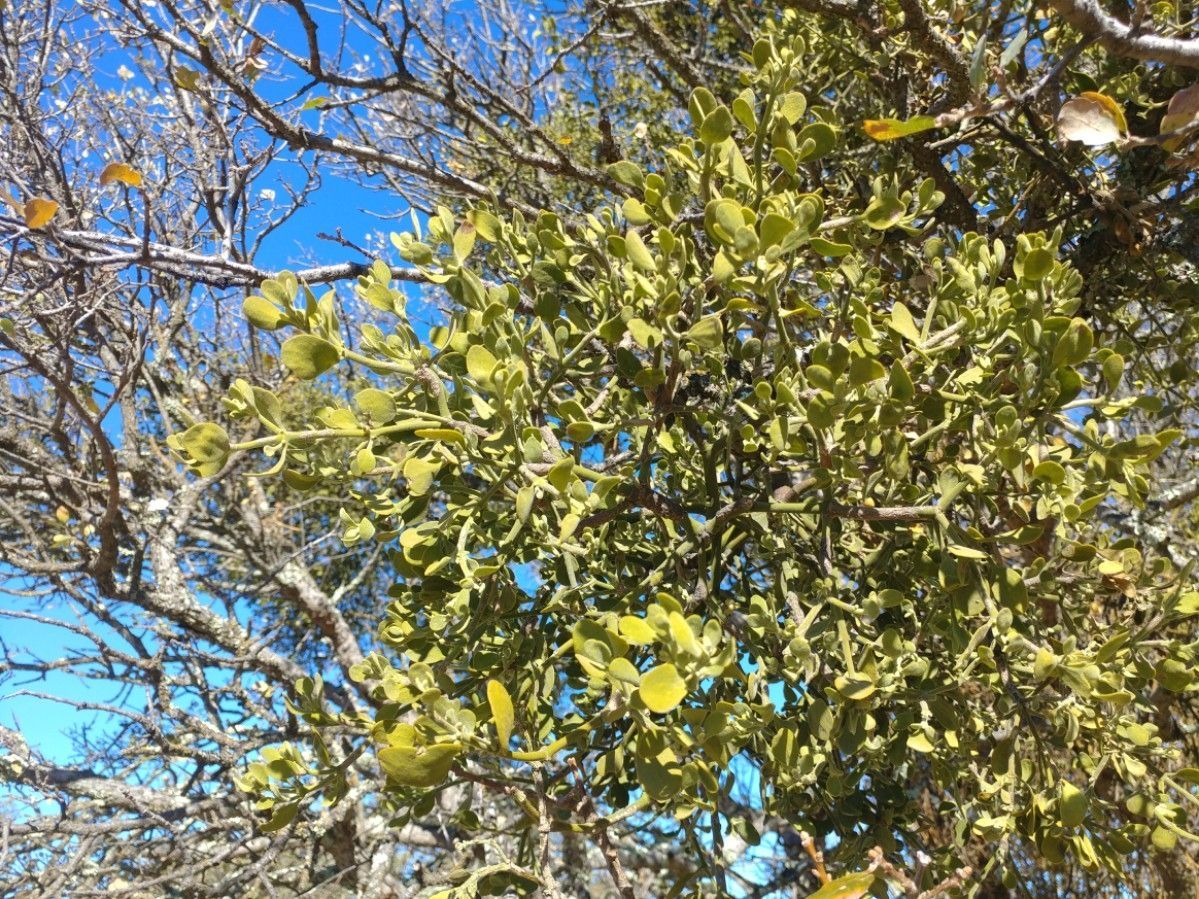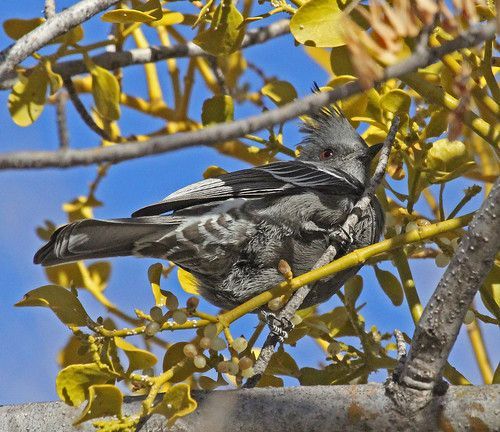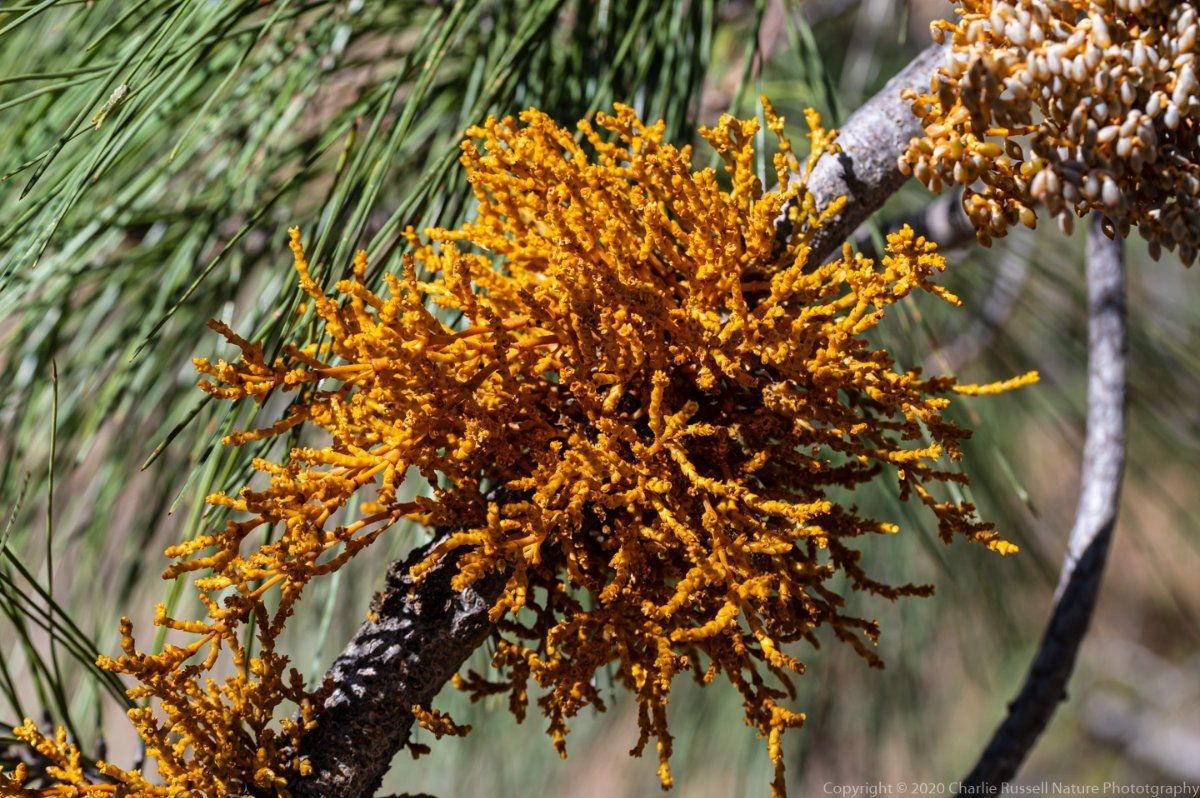Science Corner: Mistletoe

Oak Mistletoe on an oak tree by R.A. Chasey.
During the winter months, the branches of blue oaks and valley oaks across the Berryessa Snow Mountain National Monument are mostly bare, apart from occasional spherical clusters of yellow-green leaves. These are not oak leaves that got confused and forgot to fall off in the autumn, but rather they are the leaves of another plant – the oak mistletoe ( Phoradendron leucarpum ssp. Tomentosum ).
Mistletoes are parasitic plants that tap into the vascular systems of trees to siphon off water, sugars, and nutrients. They are considered hemiparasites, because most species retain the ability to do at least some photosynthesis. In most cases, the impact of mistletoes on their host trees is thought to be relatively minor, however trees with a heavy load of mistletoe may be more susceptible to damage during droughts.

Phainopepla sitting on a mistletoe by Jerry Oldenettel.
Most true mistletoe species (in the genera Phoradendron and Viscum ) depend on birds to distribute their seeds to new host plants. The birds eat the mistletoe fruit (small berries) and then excrete the seeds, which are coated with a sticky substance. If the seed is fortunate enough to land on a suitable host tree, it will germinate and set to work penetrating into the host’s vascular tissues, using modified root structures called haustoria. While a wide range of birds and other animals eat mistletoe berries, some bird species have become specialists on mistletoe. In California and elsewhere in the Southwest, a bird called the Phainopepla is a mistletoe specialist that plays a key role in dispersing the plant’s seed.

Pine Dwarf Mistletoe by Charlie Russell.
Another group of mistletoes found in California are the dwarf mistletoes, which infect conifers. In the Berryessa Snow Mountain National Monument region, this group is represented by the Pine Dwarf Mistletoe ( Arceuthobium campylopodum ). These tend to have scaly leaves that are yellow-orange in color, in contrast to the more blade-like green leaves of the Oak Mistletoe. Another difference is in seed dispersal – the dwarf mistletoes have evolved a fruit that uses hydrostatic pressure to launch its seeds through the air at speeds of up to 50 miles per hour.
In addition to our native mistletoe species, the non-native European Mistletoe ( Viscum album ) can also be found in Northern California. This species was brought to California by renowned horticulturist Luther Burbank around 1900 as an ornamental crop to be sold at Christmastime. It escaped cultivation and has been slowly spreading in Sonoma County, where it can now be found in a 15-mile radius of Sebastopol.
Despite being parasites, mistletoes are an important part of their ecosystems, providing food and nesting sites for animals, as well as contributing to nutrient recycling when they drop their leaves. For us humans, they also provide a much-appreciated splash of color in the drab gray-brown days of winter. I encourage you to keep an eye out for these unusual plants on your next hike and take a closer look if you do spot one.
-Geoff Benn gbenn@tuleyome.org
Tuleyome Education Associate
Looking for more articles like this? Click the hashtag below!
RECENT ARTICLES






